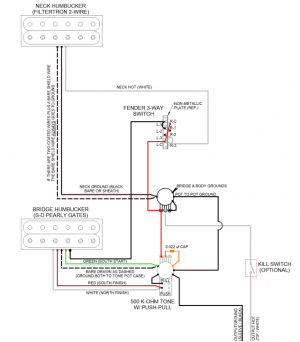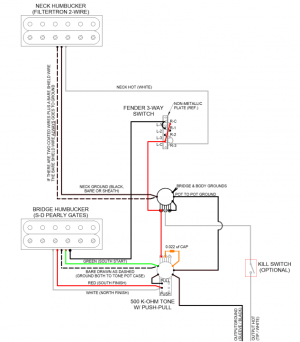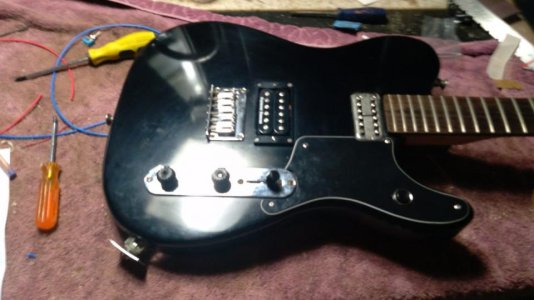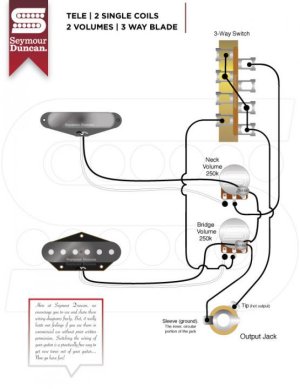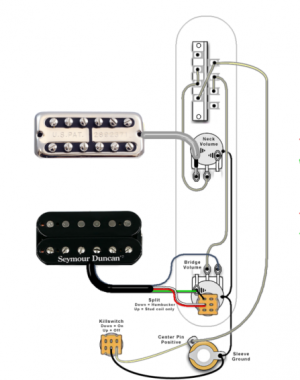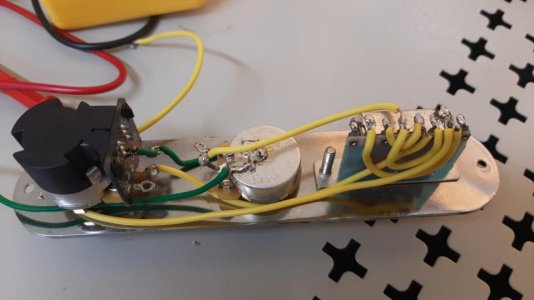Hello, hope everyone here is doing well.
I'm really new to the wiring schemes, and I hope someone here can help me...
I need a wiring diagram to solder a Seymour Duncan Pearly Gate (4 wires, bridge) and a Filtertron (2 wires, neck). Each pickup will have its own volume and it will be working with a 3-way switch, on a telecaster.
The problem is, I'll use no tone, I want each pickup with a dedicated volume, plus the bridge one will be a push-pull.
*edit* I forgot to mention that there will be a killswitch for both pickups.
Since english isn't my mother language I hope someone can drawn it for me, and sorry for any wrong words.
Thank you all for the help.
Hope this 2 pickups works well togheter.
I'm really new to the wiring schemes, and I hope someone here can help me...
I need a wiring diagram to solder a Seymour Duncan Pearly Gate (4 wires, bridge) and a Filtertron (2 wires, neck). Each pickup will have its own volume and it will be working with a 3-way switch, on a telecaster.
The problem is, I'll use no tone, I want each pickup with a dedicated volume, plus the bridge one will be a push-pull.
*edit* I forgot to mention that there will be a killswitch for both pickups.
Since english isn't my mother language I hope someone can drawn it for me, and sorry for any wrong words.
Thank you all for the help.
Hope this 2 pickups works well togheter.
Last edited:

